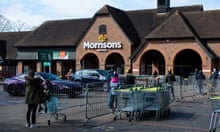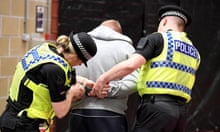The number of rapes recorded by police has doubled in the past four years while the percentage of allegations resulting in conviction has fallen, official figures indicate.
Police and prosecutors believe that the rise in reported cases indicates that people are more willing to report sexual attacks in the aftermath of the Jimmy Savile sexual abuse scandal and other recent high-profile historical cases, and amid promises that a culture of disbelief in the justice system has been banished.
In 2015-16, police recorded 23,851 reports of adults being raped – nearly all of them women – compared with 10,160 in 2011-12, according to data released today by HM Inspectorate of Constabulary on behalf of its rape monitoring group.
Recorded rapes of children rose from 5,878 in 2011-12 to 11,947 in 2015-16. The figures suggest that 109 out of every 100,000 children were recorded as being attacked in England and Wales.
“It may be that in the wake of publicity associated with the late Jimmy Savile and other historical abuse cases, more adult survivors of child sexual abuse, as well as more recent victims, have felt empowered to come forward to tell the police,” the report says.
Convictions in court compared with recorded allegations halved in four years. But because more cases were going through the system, the actual number of convictions increased.
Thus last year there were 2,689 convictions recorded, a rate of 7.5% of recorded allegations by adults and children. The same figure four years earlier was 15%, while the number convicted in 2011-12 was lower, at 2,414.
Liz Kelly, professor of sexualised violence at London Metropolitan University, said: “We have always argued you should calculate it [the conviction rate] as a proportion of reports. The vast majority of cases are lost at the investigation stage. If you don’t look at the whole process … then you get a skewed picture … 80% of cases don’t get to prosecution.”
Data in the report suggests rape cases take longer than other types of crime to process; they take 247 days to be completed, compared with 171 days for all crown court cases.
“The increase in volume of rape cases may have an impact on the timeliness,” the report adds. “However, groups representing victims have expressed concern that the longer it takes for a case to go to court, the harder it becomes for the victim to give evidence. Timing is crucial and delays may have a detrimental psychological impact on victims.”
A CPS spokesperson said: “In our 2015-16 Violence Against Women and Girls Report the volume of prosecutions and convictions were shown to be the highest ever recorded, while the conviction rate saw an annual rise from 56.9% to 57.9%. The statistics are clear – today a rape is more likely to be prosecuted and convicted than ever before.”
Sarah Green, from Rape Crisis England and Wales and the End Violence Against Women Coalition, said there was an “ongoing enormous rise in victims reporting rape to the police”. She said “the shame around this abuse may be declining and the desire to seek justice increasing. Police, courts, government and everyone in frontline services and public life should do everything to keep driving this, including speaking out against victim-blaming attitudes.”
Only a fraction of the total number of rapes are reported to police and thus enter the criminal justice system. The report says: “It is widely recognised that rape is under-reported, with many more rapes committed than are reported to and recorded by the police.”
Crime statisticians estimate that the number of actual rapes is about six times greater, which if true would mean that the proportion of people actually convicted for rape is tiny. The report says: “Convictions of the guilty are extremely important outcomes but convictions are not the only important outcomes for victims of rape.” It adds: “Cases involving sexual offences can often, by their nature, lack corroborating evidence and come down to complex decisions around consent and one person’s word against another.
“The process of preparing for court, and the trials themselves, can be very lengthy and involve levels of scrutiny of the victim not seen for other offences. At any time victims may withdraw from the process for fear of giving evidence in court, fear that the process will be too distressing, fear of being disbelieved or judged, or as a result of delays from start to finish.”
Kelly said problems remained with attitudes: “People within the criminal justice system are working with antiquated ideas and so is the public, which makes up juries.”
Kelly said these include issues to do with victims not being believed because they have not suffered internal injuries or because they froze and did not fight back. She said an alleged victim’s drug or alcohol consumption could also sway opinions within the criminal justice system. “There is a whole set of social assumptions about what a rape looks like, which most rapes don’t look like.”
The reports were prepared for 42 local police force areas. Vera Baird, police and crime commissioner for Northumbria, said: “It is straightforward to increase the percentage of convictions to prosecutions – only take the certainties to court. That is now a thing of the past as more complainants have the confidence to report and the police believe that they deserve a prosecution.”
- This article was amended on 13 October 2016. The conviction rate in an earlier version was calculated on the assumption that the number of convictions was for crimes against adults only. It included crimes against children as well. As such, the conviction rate in 2015-16 was 7.5% of recorded allegations, not 11%, and the rate in 2011-12 was 15%, not nearly 24%. This has been corrected in the text and graphics. The article has also been amended to clarify that while the data covered a five-year period, the statistical changes referred to occurred over four years.










